Il Cuore della Polpetta / The Heart of the Meatball
Photos By James Culcasi
Our friend, the inimitable meatball, in his happy place.
Recently, there has been a quarantine.
You know that already, I’m guessing. But, as you do when you are quarantined to your house for days on end or as I discovered one does when they are quarantined in their homes surrounded by memories, I started peeling away at the onion of my life. It seemed like the universe was giving me some time to process and contemplate things, so I picked up the gauntlet and my magnifying glass and had at it.
Each picture I found was like a layer of that big, and I thought, familiar onion. Pictures of family, holiday meals, and Jeff and I at our wedding provided layers of memory and depth that I hadn’t really taken the time to wrap a smile around in a very long time.
There were people who were very well missed, pets whom we loved dearly and one odd thing that kept cropping up. It was a strange realization. Strange because this familiar little sphere had traveled with me throughout my life, a devoted friend, always there in times of need.
I scanned tables. Holiday tables. Wedding banquet tables, birthday picnics, family portraits around long white table cloths. Heart racing, I picked up my magnifying glass and I found it. Just sitting there between the petals of my metaphoric life onion. A bliss handed down to me by the goddesses in my Italian family. A “normal to us” thing that seemed to have hidden in the background of many an important life decision and celebration. A ghost turned corporeal in the present day that sits smiling on my dining room table whenever we have guests.
A meatball.
A collective Italian story handed down to my plate throughout my life. I heard about it. I ate it. I took it for granted. And even though it sat in the background of my life nourishing me and stalwartly supporting my decisions, I ignored it. I took it for granted. It was just there. Just a meatball. Predictable. Authentic. Comforting. Singing of home.
And then one day during a quarantine: it hits you. It’s not a meatball at all. It’s a story. It’s a method. It is a profile in heritage. It is pride. It is your actual soul is nestled in the history of how it came to be and why it represents home to you.
Cooking brings community, comfort, culture, curiosity, education, olfactory stimulation; a “taste-buds-a-poppin'“ list that wreaks of incredible. It is art. It can speak to you with onomatopoetic sounds like crunch, snap or sizzle while offering your taste buds an exploration of a cook’s culinary expression.
Whole cultures are built on food profiles because those profiles speak to area farming and industry as well as historic discovery. Think of the Sorrento lemons that brought us Limoncello or the San Marzano Italian plum tomatoes from the fertile valleys of Mount Vesuvius that sired the perfect volcanic soil and acidity for the best tomato sauce.
But why I am waxing romantic about the Italian meatball? Every culture has versions of it in their culinary story.
There are hundreds of thousands, possible millions and billions, of recipes on making meatballs. I personally have about 15 cookbooks in English and Italian explaining the procedure and the flavor profiles of typical Italian-American polpette as they are called in Italian to very regional and sometimes exotic Italian flavors that can be combined to make them. They can be made with mixtures of cooked and uncooked favorite meats, fish, and even vegetables. We’ll get into all of that in future posts. For now, let’s just talk about the meatball which, in this instance, comes from my family’s original home city of Naples.
Meatballs are fun to make in a group. Two or three people make fast and easy work if there is party prep to bed done or a holiday on the horizon. They can be made in advance and even frozen and thrown into any kind of sauce or no sauce at all.
Most people know tomato sauce, so we’ll stick with that.
See my post on the Marinara Simplicile we like to use for meatballs at our house. This is not a time to whip up a creamy, peculating and unctuous Sugo Bolognese. Let the meatballs do the talking and keep the sauce fresh and simple.
There have been many arguments about this next issue so hear me out.
Fry or roast? If you have to make a lot of meatballs for a party- like fifty to a hundred meatballs- or if you’ve got a family like mine and you want left overs (and believe me, you want left overs) your oven is your best friend. It cooks them evenly and they look perfect. Also, if you use convection or you are an accomplished cook used to using higher heat, the oven is definitely the way to go to get the desired crispy outside without over-cooking. Easy clean up, too! No nasty splatter all over your stove top or oil burns on your forearms.
Save your arguments. We are stubborn when it comes to our family traditions. This is one of the touchy ones! Our family meatball story roasts them. That is what we will do in this recipe. In for a penny…
Here is what you will need for a basic Neapolitan meatball. All of these quantities will naturally depend on the amount of people eating and how well they like meatballs. These recipe quantities are purposely large because we have big eaters at our house.
If meatballs for an army doesn’t work for you, cut this recipe into thirds. One third will work quite well for 2 people with a few extra meatballs for left overs.
Preheat your oven to 375°. Line 2 cookie sheets with aluminum foil and give it a light spray of olive oil. We will be using the 1/3 cup scoop and a cooking time of about 30 minutes. If you want to make smaller meatballs, adjust your time by about 8 minutes.
2-3 lbs of room temperature 80/20 fat best ground beef Yes, pork can be added- but that’s another post. If you want to be daring and you love the idea of the noble pig being incorporated into your meatball like I do, match the pork pound for pound against the beef, 1:1. In the case of 3 pounds 1.5:1.5 and so on. How about 2:1? Two pounds of beef to 1 pound of pork. Or the reverse! You decide.
1 large egg for every pound of meat- in this case 4 eggs for 3 lbs. We had small eggs from a local farm so we added one to make up for the size by adding 1.
2 -3 cups of old bread- the older- the better (any old Italian bread or baguette that you like. I have recently found that sourdough provides a flavor that is just brilliant) This is arguably one the most important ingredients beyond the quality of your meat. It will, with it’s dear friend milk, keep your meatballs moist and supple without being spongy like when you use ricotta. Keep your ricotta in your ravioli and out of your meatballs. Nobody wants a perfectly tasteless, homogeneous, piece of sponge posing as a meatball. I mean, if that’s your thing, knock yourself out. I like the soft chaos and chunk of the meatball from Naples.
1 cup of whole milk seasoned with the following:
1 Teaspoon of freshly cracked pepper
2 fresh bay leaves banged lightly with the butt of your knife to release the flavor
2 smashed peeled garlic cloves
½ Teaspoon of salt
Addressing the bread first, in a medium bowl, put bread and seasoned milk. Let bread sit while you do other things.
1 handful/chiffonade of fresh, Italian basil- I use one big handful per pound. To chiffonade: Get your sharpest weighted knife- I use my 10” chef which is always my workhorse. Wash and pick the leaves off your basil. Pile them up on top of each other. Roll them into a tight cigar and SLICE them thinly. Don’t chop. You’ll smash them if you chop or if your knife is not sharp. Or you can watch my friend Oren Franco do it in his masters series or take the cues from Kim’s perfect chiffonade to your right..
4-5 good sized cloves of minced garlic or quanto basta meaning stop when you like like it. Don’t let ANYONE ever tell you how much garlic to put in. You don’t need that kind of negativity in your life. At my house: we LOVE it and we use a lot of it. Yes: this is a garlicky meatball. If you don’t like garlic, use one finely minced clove per pound of meat and leave the rest out. It will be there in the background but not be upfront and in your face. I mean, I want you to make them!
If I’m being honest, we use about 6-8 minced cloves in one pound of meat depending on the size. Just keep clove size in your mind when prepping. Grab the head of garlic and use your palm to press and wiggle on top of it’s head. It’ll start to separate. Just cut off their little hard, butt ends and smash gently. They will fall right out of their little paper jackets.
Next point: Julia Child thought that a garlic press made the garlic taste metallic. Back in the day, presses were made almost exclusively from aluminum which tarnished with washing, garlic acidity and age. I agreed with her back then. Now we can buy stainless. Use a press if you don’t have the patience or skill for mincing garlic with a knife. I have both but I still use a stainless press because it is just easier and faster.
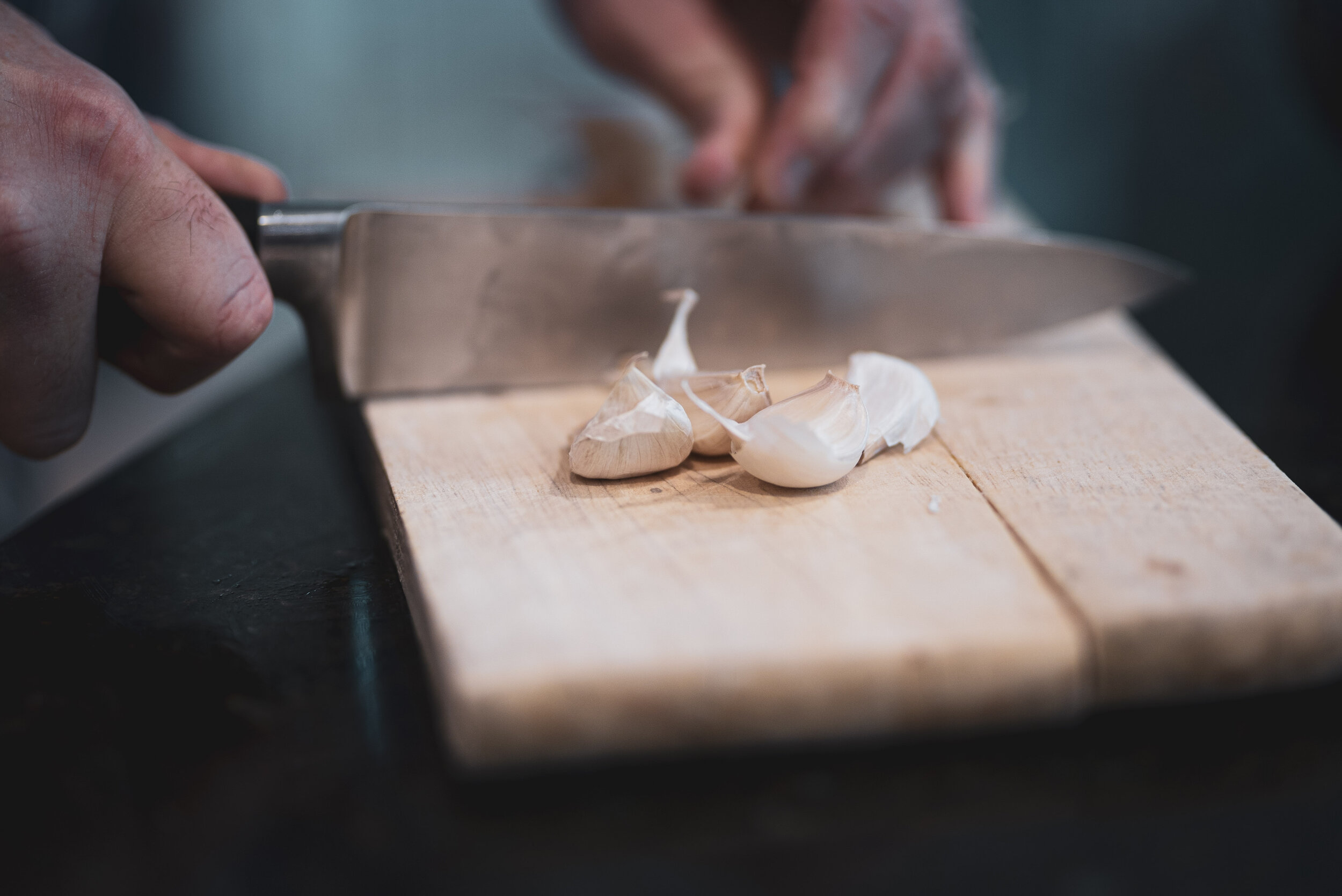
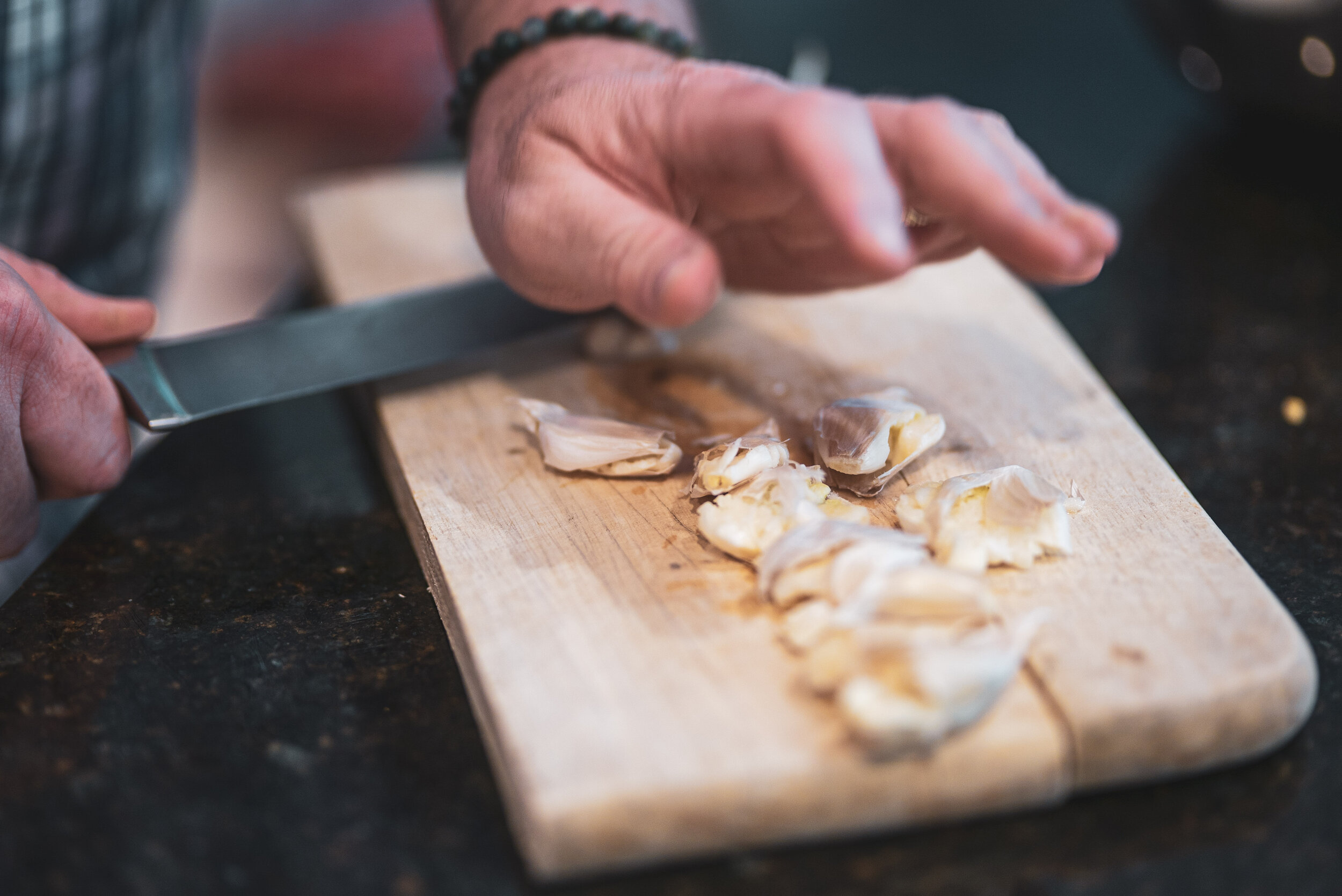
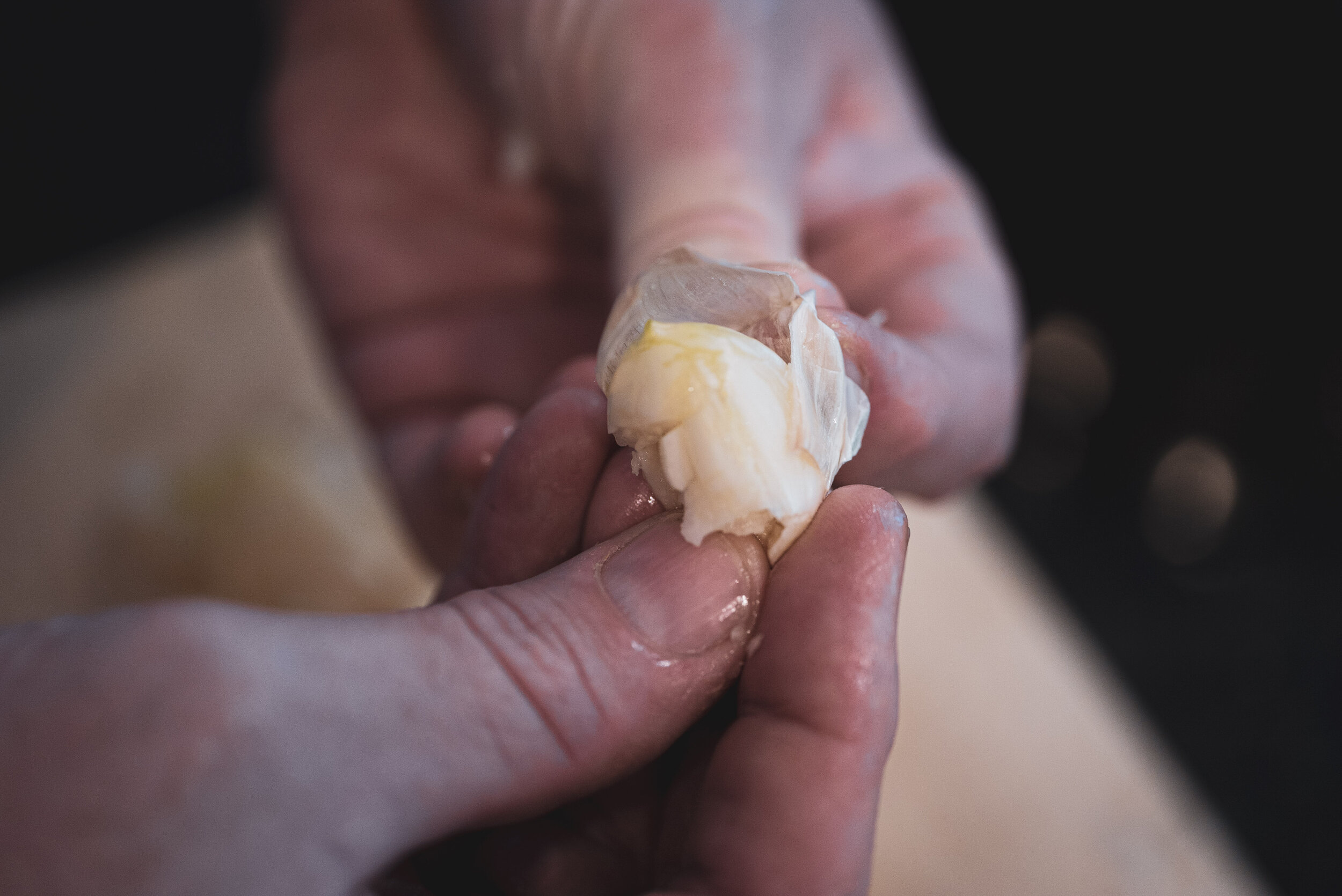
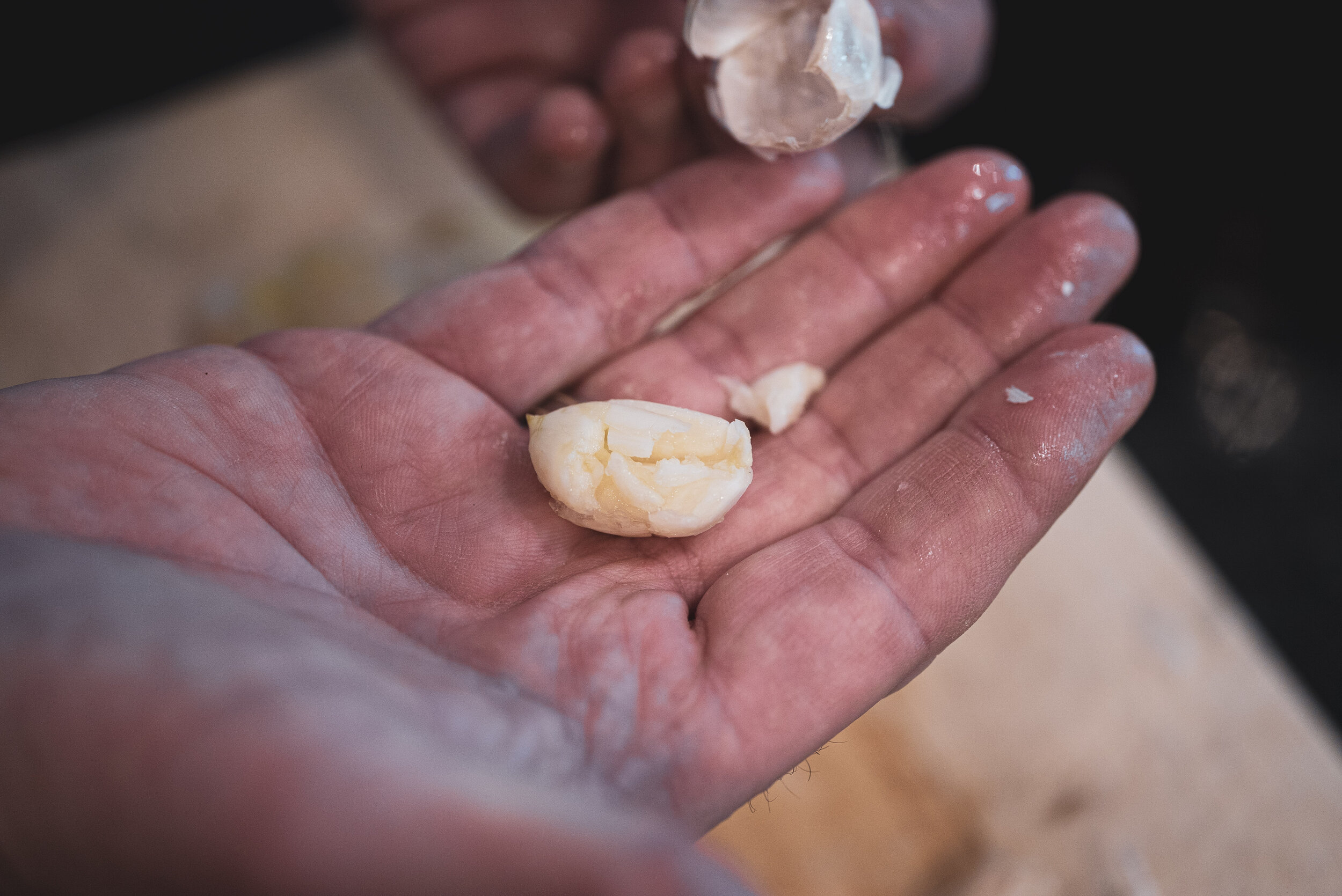
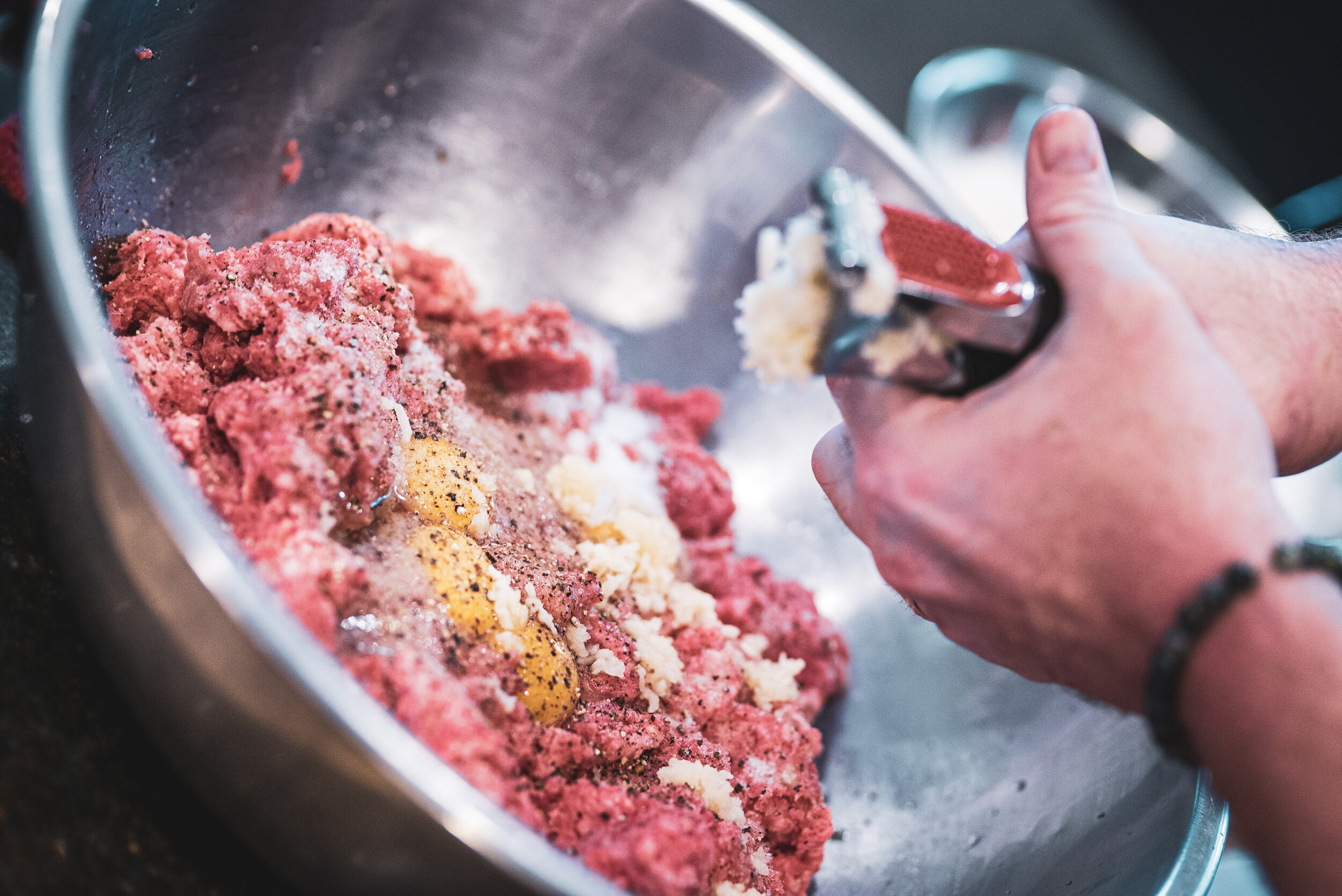
Hard, grated Italian cheese to make 2 cups
1 cup Pecorino Romano cheese
1 cup Grana Padano or best parmesan cheese. We love Grana at our house.
Honestly- I use more. Maybe even up to 3 cups microplaned for about 2 lbs of meat. It’s important to note that not all graters are the same and they contribute to the specific weight of the cheese. A microplane makes a lighter weight cup measurement while a grater will make a much heavier cup of cheese thus giving you more cheese in your cup. Using more of this salient cheese will require you to cut back on your salt. Know that and adjust accordingly.
2 tablespoons or a good 3 LIGHT turns around the bowl with your favorite extra virgin olive oil. I will tell you that we love Partana Sicilian Extra Virgin Olive Oil. Love. I’ve included a link for you. It is fruity and green and just delicious. Or ask your local small Italian grocer if she can order you some!
Yes, you are correct! We threw in a handful of fresh parsley just because we had it. (What a good eye you have!) If you don’t have any, it’s okay. The advantage to parsley is that it does provide a nice freshness you can’t get otherwise. Make sure it’s only handful, though. The basil should be the star in this meatball! Because of our slight improv, the ratio was 3:1. Three of basil to one of parsley.
Go back to your bread. It should be very moist now. Mix it up and squeeze it out. Tear it up with the help of your meatball making friend.
We love some bigger chunks. This is a bone of contention with chefs and home cooks. But we feel like a toothy bite of this moist and delicious seasoned bread makes this meatball very special. You can choose to tear small, imperceptible pieces or irregular sizes smaller to larger. It makes for a very fatto in casa or made at home look and textured product. You might have some milk left- if so, go ahead and use it in the meat. Be judicious. Using a lot will require you to adjust for moisture by adding some dry breadcrumbs or extra cheese- which wouldn’t be bad thing.
I’ll go ahead and say, if you have about a 1/4 cup or less- go ahead and toss it in. More than that and you will make the mixture too wet. The milk and the milky bread are going to give you the deliciously soft meatball which Neapolitan meatballs are famous for.
Now mix it all together. Don’t go crazy, friends. Just mix it until just combined. You’re making meatballs, so should be able to make a ball with your hand. When you can do that, you’re done. You MIGHT need a little breadcrumb or cheese here if your meat mixture is too wet. Use your “good eye” and figure out how much. You’ve got this.
This would be a great time to make a little chef’s treat! Roll yourself and your friends a couple of tasters and cook them in your little frying pan or cast iron. Here you will have a chance to adjust any seasoning or remember if you forgot something. It happens…
Next, set up your assembly line. Here’s where friends come in handy. You could conceivably have a scooper and a roller/placer. Place the meat mix bowl, a flat dish filled with fine breadcrumbs and the foil lined cookie sheets in a row. You are now ready to roll.
My grandparents, Doris and Carmen Napolitano.
Next, make friends with the green handled ice cream scoop (1/3 cup). The scooper takes a rounded scoop of meat mix, plops it into the roller’s hands. The roller rolls the meatballs lightly with their wet hands. THEN lightly rolls the balls into the fine breadcrumbs covering lightly and places them on the oiled cookie sheet.
The breadcrumbs give the meatballs a little outside crispness and it is just how my Nonna used to do it. Even as she taught it to me, she said, “Così è come lo facciamo.” or “This is how we do it.”
I’ll never do it any other way.
Once you’re all rolled out, splash a little olive oil on the meatballs and place them on the center rack in your preheated 375° oven. Watch them. Depending on how hot your oven is, you may want to brown them just a little more. The broiler works great for this because you really don’t want to over cook them. But don’t walk away! Disaster would almost certainly ensue…
Our friends the Green Ice Cream Scoop and the 3 liter tin of Partana Extra Virgin Sicilian Olive Oil.
Okay, so now they are done. Now what?
Here, we have a recommendation. You can plop them into the sauce or you can put them on a platter and sauce them there. Just know, these are a little softer than your old, tight, beef meatball. They will break with people digging into a tall container. Choose a nice warm platter and sauce them well. Enjoy with pasta, alone as a meat side dish or a delicious slider with delicious picante provolone and a toasty, grilled slider roll. Use butter when you grill those rolls.
Sometimes, I’m sure that my heart is a meatball. All the people it took to get me here live inside its story.
Recipes are like time capsules from years when we did without and also had plenty. When you make a dish from your grandmother’s recipe box, which in my house is the memory of what she taught me not a recipe card, you taste what she tasted. You taste the tradition of La Gastonomia di Casalinga or The Gastronomy of the Housewife. Each direction turns into a bite which encourages you to think about how she thought about nourishing the people she loved so that you can do the same.
You are tasting the past. You are tasting all the Christmases and the Easters and the birthdays that passed through her all the way to this moment and to you. It is a gift left to you by the ones you loved so that you could remember them and what they did to keep their family nourished and comforted. It is this soulful countenance of comfort and memory which was left in your care so that future generations could know and could be proud of where they came from.
So you see, it’s not just a meatball. It’s a story of love, nourishment and care.
And it is a story that I am incredibly proud to be a part of and to share with you.
Polpette alla Napoletana / Neapolitan Meatballs
Preheat your oven to 375°.
You will need:
Line 2 cookie sheets with aluminum foil and parchment lightly oiled
1 green handled (3.25oz) ice cream scoop with a squeeze trigger or a good eye!
1 large mixing bowl
FIRST THE BREAD
Soak bread in the following and put aside.
2 -3 cups of old, even hard bread
1 cup of whole milk seasoned with the following:
½ Teaspoon of freshly cracked pepper
2 fresh bay leaves banged lightly with the butt of a knife
2 smashed peeled garlic cloves
¼ Teaspoon of salt
NEXT THE MEAT MIXTURE (enough for an army or to freeze)
3 lbs. of room temperature 80/20 fat best ground beef
3 large beaten eggs- 1 large egg for every pound of meat
3 Teaspoons of salt- 1 teaspoon of salt per pound of meat
3 Teaspoons of pepper- 1 teaspoon of pepper per pound of meat
3 handfuls of freshly washed basil in a chiffonade- 1 handful of fresh, Italian basil per pound of meat
1 handful of very coarsely chopped parsley
4-5 good sized cloves of minced garlic
1 cup grated Pecorino Romano cheese
1 cup grated Grana Padano
3 tablespoons of extra virgin olive oil
BREADCRUMBS FOR ROLLING
2 cups of plain breadcrumbs on a flat dish or pan for rolling meatballs- seasoned with 1 Tablespoon of Grana Padano, pinch of salt and pepper. Set aside.
Put your old bread in a bowl with milk, bay salt, pepper and smashed garlic. Set aside.
In a large bowl, put your meat, beaten eggs, salt, pepper, basil, parsley, 2 cups of both cheeses combined, olive oil.
Back to the bread. You must steep this until it is soft. Once it is just about there, squeeze out the milk and put the moist but crumbed up bread into your meat bowl. Tear up any pieces that seem too big. We like to see pieces of bread. Save the milk mixture.
Mix the meat until just combined. If it seems stiff, add the milk mixture. If it seems too wet, consider adding a handful of plain breadcrumbs and more grated cheese. The object is to get the mixture to hold together in a ball.
Scoop into lightly wet hands to roll.
Immediately roll in the seasoned breadcrumbs that were put aside.
Place on olive oil sprayed or rubbed baking sheet.
Splash a little olive oil on the meatballs and place them on the center rack in your preheated 375° oven.
Cook for 35 minutes or until brown. If you want to crisp the tops, use your boiler.



